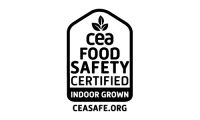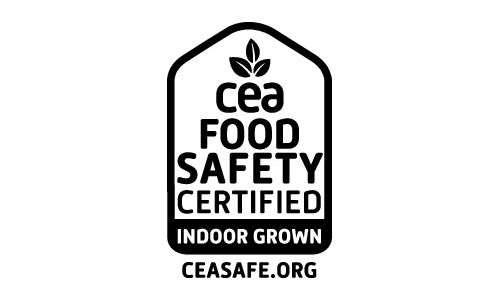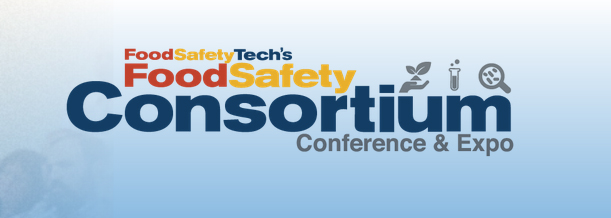They’re sneaking in through your windows, crawling through your front door when nobody is looking and squeezing through tiny openings to steal your food. They’re tough to catch, and even tougher to spot.
Naturally, we’re talking about pests. They come in all shapes and sizes, but have the same goal: To find a reliable, safe place to call home where they have abundant access to food, water and shelter. Unfortunately, food processing facilities offer pests all three of these things, making them susceptible to infestations that can compromise products and hurt the bottom line.
You probably already have an integrated pest management (IPM) program in place to mitigate the risk of pests inside your facility. While these programs are great for offering proactive, preventive solutions that use chemical solutions as a last resort, they shouldn’t be the beginning and end of your pest management efforts.
First and foremost, facility staff should always be familiar with the warning signs of pest issues and what to do if they spot something crawling around the building. Most pest management companies will offer complimentary training sessions for you and your staff, which is a great first step. Then, during your weekly/monthly staff meetings, let your employees know which pests are most likely to cause a problem and include some images of warning signs. Empower them to call out problems, explain the risks of pest damage to your products, and you’ll have a better chance of catching pest problems early.
But your staff can’t be expected to spot everything, and there are always pests that slip through the cracks.
That’s why pest management professionals frequently recommend using a variety of tools to closely watch pest activity and detect emerging hot spots around facilities. Tools like IR thermometers, moisture meters and telescoping cameras help pest management professionals identify these high-risk areas. Once these areas have been identified, your pest management professional can take the next step in advanced detection using monitoring devices to paint the picture of pest activity around your facility.
Monitoring devices make it easier to see where pests are traveling and give an idea for how many may be present. These devices capture pests for identification, assist in early detection and will help to mitigate the risk of infestation through early warning. If you’re particularly worried about an upcoming audit or the recent enforcement deadlines for FSMA, these devices will give you a better chance of scoring well and can help you demonstrate compliance by shifting your pest management plan to a more proactive approach as mandated by these new regulations.
There could be quite a few of these monitoring devices you’d like to start using around your facility today.
Fly Lights
A popular device found in many food processing facilities, fly lights attract flying pests by emitting strong UV lights that draws insects in, at which point they become trapped on a sticky glue board in the back of the light—out of sight and away from your products. They work best when placed inside near doorways and windows where pests might be able to squeeze inside, but they’re effective just about anywhere. Discuss placement with your pest management provider.
Why does it work?
The leading theory on why flying pests are attracted to lights has to do with their reliance on the sun and moon as navigational guides. In the past, insects could use the sun and moon as a guide because it stayed at a constant angle, allowing them to move in a consistent direction. However, artificial light confuses them and causes them to circle around the light source. Insects that move towards light in this way are called positively phototactic, while pests like cockroaches who move away from light are called negatively phototactic.
Mechanical Traps
Most commonly used for rodents, mechanical traps can allow for the humane capture and removal of rats and mice. These traps sound simple, and that’s because it is; the concept hasn’t changed for years. Why? Because it’s effective! Rodent curiosity or bait can draw the rodent inside one of these stations, which have a mechanical door ready to close as soon as it enters. There is also new technology on the way that will instantly notify both customer and pest management professional when this occurs, so the creature can be removed immediately. These stations are most frequently used around the interior perimeter of a facility to keep rodents from getting further than the exterior walls.
Why does it work?
Simply put, rodents will often run along walls. They’re extremely athletic and very clever, which is why it’s never recommended to try to place traps yourself. They can learn from close calls with unsuccessful trapping techniques, which is why it isn’t worth the risk to handle rodent issues alone. With proper knowledge and placement, they can be outsmarted.
Sticky Traps and Glue Boards
Perhaps the simplest tools in the pest professional’s shed, sticky traps and glue boards are meant to reduce the population of crawling insects around a facility. Because they’re not very large, they can be used just about anywhere inside a facility.
Why does it work?
These are usually used for small population control in areas where crawling pests are already present. Sticky traps and glue boards are generally coated with a substance that attract pests, which then ensnares them when they step on the surface of the trap. These are great for catching pests like cockroaches, and give you a sense of how many pests are coming through an area over a period of time. Over time, you’ll be able to see if the population is trending downwards or if the problem is getting worse based on the number of pests captured.
Pheromone Traps
Great for combating the stored product pests that pose a huge threat to food processing facilities with large inventories, pheromone traps trick pests into getting trapped. While sticky traps can be used all over, pheromone traps are more effectively used by placing them strategically around storage areas to help monitor for any stored product pests.
Why does it work?
This type of trap uses synthetically replicated versions of insect pheromones, which are secreted chemicals that insects put out to communicate with each other. In this case, the pheromone traps lure pests out from their hiding/feeding areas. There are also probe-type pheromone traps that are best used in bulk grain storage if necessary.
Now this isn’t an exclusive list of all the monitoring devices a pest management professional can recommend around your facility, but it does give you an idea of the most common, effective devices out there. Keep in mind that sanitation and exclusion must also be a big part of any IPM program, but monitoring devices (along with detailed documentation) can take your program to the next level and give you a better feel for the pest issues your facility deals with the most.
Any time you’re using these tools and devices to detect pest hot spots, it’s important to record the results over time. Your pest management professional will keep a logbook of findings on site, and you should reference that regularly. Also, consider requesting or creating a trend map of pest activity over time to help you see which pests are plaguing your facility the most. That way, it will be easy to work towards improving the pest management program you have in place, which in turn will help protect your products from contamination and protect your bottom line.









